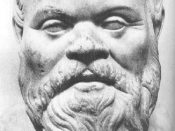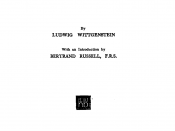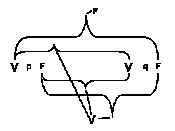In the Tractatus Logico-Philosophicus, Wittgenstein is convinced that language mirrors the world, and that things which are in the world must be expressible through language. However, he believes that the way in which language represents the world can not be expressed in the language, and that this is not generally understood. For example, in a perfect logically perspicuous language, it is nonsense to say that M is a thing, so this cannot be said. However, by using the symbol 'M' we are showing something; 'M is a thing' is already shown when you see 'M'. Wittgenstein required another form of expression for the things which can't be said and this has become known as the doctrine of showing. However, the doctrine itself is never made perspicacious; it is of cardinal importance, but he never really tries to explain it in the Tractatus, he invokes it without any specification of its meaning.
By the time showing is introduced in the 4.12's of the Tractatus, Wittgenstein has developed his picture theory, and shown how propositions in language can represent real states of affairs just like models or pictures. Relations between names in propositions represent possible arrangements of real objects. The representation and reality must have a common logical form, and this is the minimum which must be in common to allow the picture to picture reality. However, the representation can never say that it includes this logical form - it can never be displayed within the model, the picture or the proposition, but must be there nonetheless. It is noticeable to anyone who happens to study the representation, as they will need to know what there is in common. What cannot be put into words refers to features of reality. However, this can only be because the logical form is...


